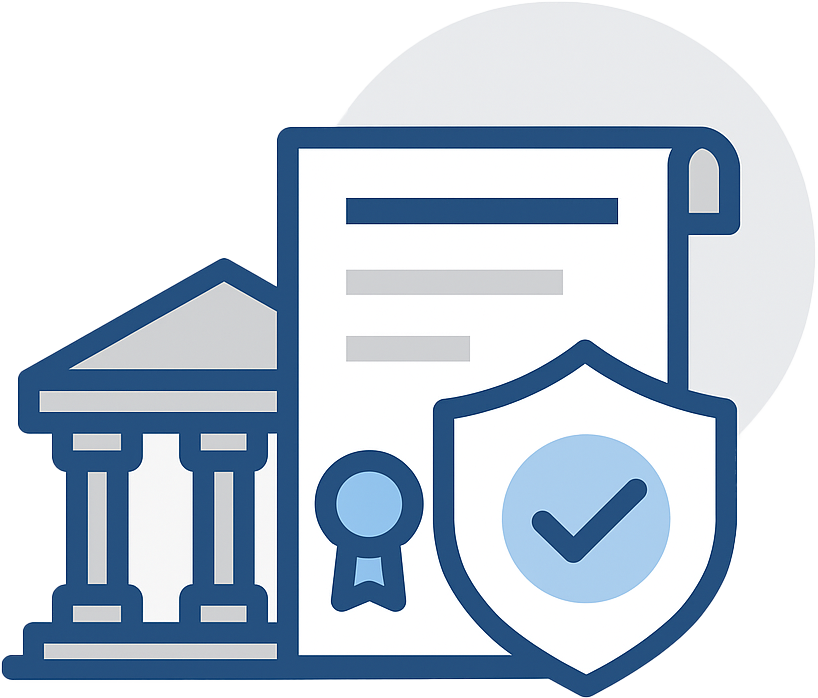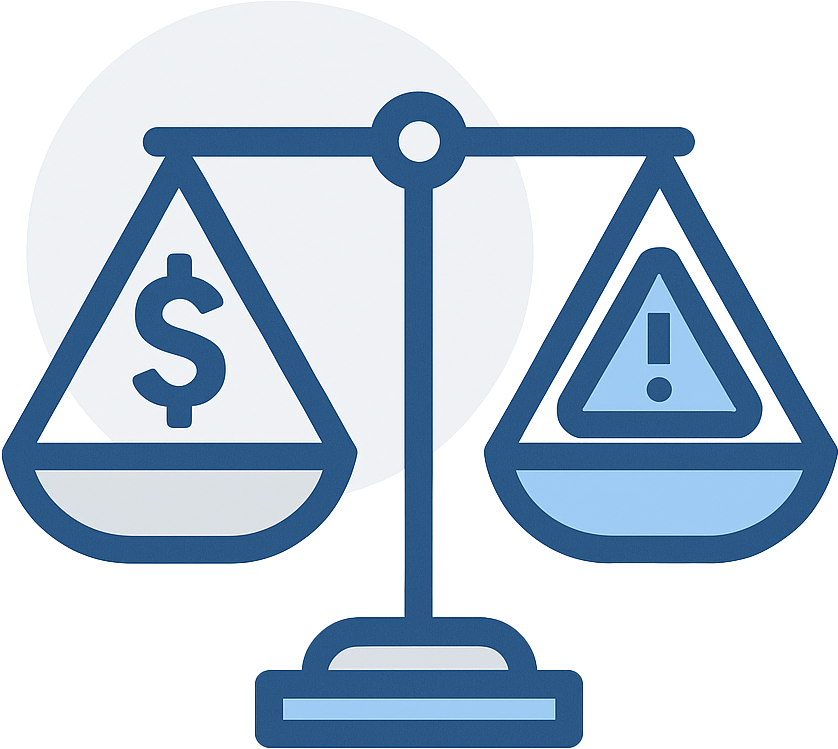A Clear, Real-World Guide to Understanding Phase I Environmental Site Assessments
When we start talking about Phase I Environmental Site Assessments (ESAs), we often get the same reactions:
"What is that?"
"How much does it cost?"
"How quickly can it be done?"
"Do I really need one?"
"Why is my bank making me get this?"
And we get it. These assessments aren’t exactly a common topic at the dinner table. But if you’re involved in real estate, lending, construction, or redevelopment, a Phase I ESA can make or break your deal, and protect you from some seriously expensive surprises down the road.
Here at RMA, we've conducted more Phase I ESAs across the country than we can count. And in this guide (or the video above!), we’re breaking down everything we know - exactly what they are, when you need one, what’s involved, and why it’s worth getting it done right the first time. By the time we're done, you'll be a Phase I expert.
Need help or have a question about your specific situation? Reach out to us here. We’re happy to talk through it. Okay, let's jump in!
Table of Contents
First things first: what is a Phase I ESA, anyway?
A Phase I Environmental Site Assessment (ESA) is a report that evaluates a piece of property for potential or existing environmental contamination. The goal? To find any signs that the property could be a risk due to hazardous materials, past spills, or other environmental concerns.
Here’s what’s included in a standard Phase I ESA:
- A detailed site visit (we walk the property, inspect for red flags, and take photos)
- A deep dive into historical records (like aerials, maps, reports, and directories)
- Regulatory database reviews (we check for known spills, leaks, and past incidents)
- Interviews with people who know the site’s history (like owners, managers, officials if we can and/or are allowed)
- A final written report with our findings and conclusions
The entire process follows ASTM Standard E1527 (currently E1527-21), which is the industry standard. And it’s designed to help landowners, developers, and lenders avoid nasty surprises... like discovering an old leaking underground storage tank after you’ve closed on the property.
For a deeper dive on the basics, you can read:
👉 What is a Phase I Environmental Site Assessment?

Why would I need a Phase I ESA?
The most common reason is that your bank or lender is requiring it. That’s because Phase I ESAs are used to limit environmental liability under the federal Superfund law (CERCLA). In plain English, this means that if you do your due diligence before buying a property, you can avoid being held responsible for cleaning up contamination that wasn’t your fault. But banks aren’t the only reason to do one.
We recommend a Phase I ESA if:
- You’re buying, selling, or refinancing commercial or industrial property
- You’re planning new construction, renovations, or redevelopment
- You’re investing in real estate and want to protect yourself from future cleanup costs
- You’re working with properties that have a “sketchy” or unknown history
Skipping a Phase I ESA might save you a few thousand bucks upfront, but it could easily cost you tens or hundreds of thousands (or even millions!) later. We've seen it happen.
For more reading on this, check out these articles:
👉 Do I need a Phase I ESA?
👉 Why does my bank want me to get a Phase I ESA?
👉 What protection does a Phase I ESA provide?
What does a Phase I ESA actually look for?
We’re not testing soil or collecting samples - that comes later if needed (that’s called a Phase II). What we’re doing in a Phase I is looking for Recognized Environmental Conditions (RECs). Basically, any evidence of contamination to the environment due to previous property usage.
Common RECs include:
- Leaking underground or aboveground storage tanks (especially older ones)
- Historical use of chemicals, solvents, or fuel
- Nearby contaminated properties that could have impacted your site
- Past spills or leaks recorded in regulatory databases
- Stained soil, stressed vegetation, or other visible signs of contamination
We also note historical RECs (HRECs) and controlled RECs (CRECs), which are basically issues that were already addressed but are still worth flagging. To get the full story on Recognized Environmental Conditions, take a look at:
👉 What are RECs in a Phase I ESA?

What happens if a Phase I ESA finds something?
If we find anything that looks suspicious, we might recommend a Phase II ESA. That’s when actual soil, groundwater, or vapor sampling comes into play to confirm whether there’s real contamination and how bad it is.
That sounds scary, but it's not always a dealbreaker. Sometimes a Phase II comes back clean. Other times, it confirms an issue, and gives you a clear roadmap for remediation. Either way, you’re better off knowing than getting blindsided later.
Want to dive deeper into Phase I results and how Phase I and Phase II ESAs compare? Check out our guides:
👉 Phase I ESA Outcomes Explained
👉 Phase I ESA Costs vs. Phase II ESA Costs
How long does a Phase I ESA take, and how long is it good for?
In most cases, a Phase I ESA takes about 3 to 4 weeks to complete. Some projects might take over a month, and other projects might be turned around in days. The actual timeline can vary depending on several real-world factors.
For example, larger or more complex properties like sites with multiple structures, a long industrial history, or past redevelopment take longer to assess simply because there’s more ground to cover, both physically and on paper.
Another big factor is how long it takes to gather historical documents. We rely on everything from old aerial photos and fire insurance maps to city directories and topographic surveys. Sometimes those records are easy to pull. Other times, they involve requests to municipal agencies or state archives that can take days or weeks (or longer) to process.
Even when we get the documents quickly, the level of detail can dramatically impact our review time. A site with a straightforward history and clean records is a much faster lift than a property with a tangled past, questionable uses, or a long list of potential environmental issues to track down. Sometimes we might have a dozen pages to go through, other times it's literally thousands.
Finally, there’s the matter of scheduling the site visit. Like any other kind of meeting, it depends on both of our schedules. We need to find a time that works for you and for us. That means a window when we’re available to travel to your site, and you’re available to have us there - if that's what the project requires. Sometimes site work can be done alone, other times we'll need you to unlock doors and gates so we can get on-site and look around. Depending on location, access, and availability, that coordination can slow things down.
As for how long it's good for - if you’re just using it internally, you can technically rely on it indefinitely - but if you’re using it to qualify for legal protections or lender requirements, it must be conducted within 180 days (per ASTM standards) or the proper transaction. After six months, you can update the document to buy yourself another six months, but. After a year, it’s no longer considered valid.
For more details, check out this article:
👉 How Long Is a Phase I ESA Good For?

When is the right time to get a Phase I ESA?
This is a big one. The answer? As early as possible. A Phase I ESA can take several weeks to complete - sometimes faster, sometimes slower depending on the site, the size, and how quickly we can get our hands on the necessary records. If your closing is coming up fast, and the bank just told you they need one, time is of the essence.
We’ve worked on tight deadlines before, and we can usually help. But the earlier you bring us in, the smoother everything will go.
How much does a Phase I ESA cost?
Most standard Phase I ESAs fall in the $3,500 to $5,000 range. That cost depends on the size and location of the property, how much historical data we have to dig through, and how complex the site is.
Here at RMA, we are not a "bargain Phase I provider", and our work reflects that. By the same token, so does our price, with our Phase I reports typically coming in between $4,000 to $6,500. More on that shortly.
Our advice? Be wary of companies promising bargain-basement prices. We’ve seen them, and they're really bad. We've had clients come to us after getting burned by a cheap report that didn’t meet standards or missed major issues. In the world of due diligence, you truly get what you pay for. And if you pay for a cheap Phase I ESA, it's like buying a bad insurance policy: it won't cover you or help you out when you actually need it. So buyer beware.
Need help budgeting? Try the tool below! Want more info? Here's our detailed breakdown of what goes into the price:
👉 How Much Does a Phase I ESA Cost?
The Problem with Fast & Cheap Phase I ESAs
Let's dig into pricing and timelines a little deeper. Here's the dirty little secret: there’s a race to the bottom in the environmental consulting world when it comes to Phase I ESAs.
Some firms are selling these reports as fast, cheap, commodity services. In fact, it's become its own mini-industry within the larger environmental consulting space. These companies often rely heavily on junior staff (sometimes folks with less than a year of experience!) and might process each report in a matter of hours using a standard template. They crank through as many as possible, every day. It’s all about low-cost, high-volume.
Here’s what that gets you: sloppy reports that aren't all that useful and missed RECs that could cost you tens (or hundreds) of thousands later. Again, buyer beware.
At RMA, we aren't a part of this race to the bottom. We offer what you might call a "premium Phase I service". The way we see it? If you’re investing serious money into a property, you should expect your consultant to do the same. Let's expand on that a little further and explore exactly what RMA's Phase I process looks like in the next section.
Think of it this way - would you ever tell someone "yeah I found the cheapest surgeon to patch me up!" No, you wouldn't! You want to find the best to keep you healthy!
Would you want to tell your kid "I found the cheapest mechanic possible to fix your first car, now get back out there on the highway, good luck!" Again, not a chance!
For more on this, check out:
👉 Why You Should Avoid a Cheap Phase I ESA.

How RMA Conducts Phase I ESAs
At RMA, we treat Phase I ESAs as the serious due diligence tools they are. We don’t rush. We don’t cut corners. And we don’t hand your project off to a recent college grad just looking to get their feet wet. Every ESA we conduct is led by experienced professionals who have spent years, even decades, working with properties just like yours.
Our process is slower than some of our competitors, and that's by design. Not sluggish, but intentional. We review every site with care. We chase down and examine obscure historical documents. We make the extra phone calls. We follow up when something makes us scratch our heads. If there’s a concern buried in the site’s past, we’re determined to find it.
We don't offer a $995, 2-day-turnaround box-checking Phase I, because it's a waste of our time, and a waste of your money. Our Phase I reports are premium-level assessments that hold up under scrutiny from banks, regulators, attorneys, or anyone else reviewing the report. We've had them dragged through the mud in court, and stand up. Can your rock bottom low-cost provider say the same?
If all you need is a quick pass to get your loan through underwriting, we won’t be your cheapest option. And that’s okay. But if you’re buying a site that’s worth protecting (or protecting yourself) we'll make sure you get a Phase I that won’t leave you guessing.

What's New with Phase I ESAs in 2025?
We’re often asked, “Have Phase I ESAs changed recently?” And the answer is: yes, in more ways than one. While the core process still follows the ASTM E1527 standard, several trends are shaping how Phase I reports are being conducted, reviewed, and trusted in 2025.
ASTM E1527-21 is the official standard across the board. Though it was first released in late 2021, the EPA confirmed in 2023 that this version is the only one that satisfies All Appropriate Inquiry (AAI) under CERCLA. We all knew this and saw it coming, but we just got our hands on a recent (as in since 2023) Phase I that was referencing the prior (2013) standard! If your consultant is still using the older version or hasn’t updated their process, that’s a sign they may not be keeping pace, and your report could be rejected by a lender or fail to protect you legally.
There’s growing pressure to address emerging contaminants (especially PFAS). While PFAS and other "forever chemicals" aren’t formally required under the ASTM standard (yet), many banks, attorneys, and institutional investors are beginning to expect that these chemicals be flagged when relevant, even in basic Phase I ESAs.
Lenders and legal teams are demanding clearer, more defensible reporting. Gone are the days when a vague checklist and a few pages of generic language would cut it. Reports that fail to clearly explain RECs, skip over historical nuances, or rely heavily on “standard language” are being challenged (or outright rejected). This is where cheap Phase I ESAs fail left and right.
And then there’s AI. In 2025, some firms are experimenting with artificial intelligence to generate Phase I ESA reports faster and cheaper than ever before. In theory, it sounds efficient. But in practice, it can be dangerous. We've tried it, and so far, the results have been pretty bad! We’ve seen reports written by AI tools that misinterpret historical data, misidentify site features, or flat-out miss key details that only an experienced environmental professional would catch. A Phase I ESA isn’t just a data dump, it’s an investigation. It requires judgment, nuance, and a deep understanding of site conditions and environmental risk. If someone’s offering a “smart” Phase I for half the price, ask how much of it was actually reviewed by a human who’s been on a real site before. At RMA, we don’t use AI to conduct your Phase I. And it's not because we don't think it could be a useful tool - in fact, we've tried to use it to analyze 1,000-page EDR reports, with... less than satisfactory results. The technology just isn't there (yet). We do occasionally use it (carefully) to support research, but rest assured that our ESAs are conducted, developed, and signed off on by an environmental professional with years (often decades) of experience. Because that’s what your investment deserves.
In short: Phase I ESAs in 2025 aren’t just about checking the box anymore. They’re about getting it right. That means using current standards, evaluating emerging risks, and making sure a real expert is doing the work... not just a computer or a junior analyst.

More Common Phase I ESA Questions We Get (and Honest Answers)
Do I need to get a Phase I ESA on vacant land?
You should, because vacant doesn’t mean risk-free. Just because there’s nothing standing on the property now doesn’t mean there wasn’t something there in the past. We’ve seen Phase Is on open lots that used to be gas stations, dry cleaners, or industrial facilities.
👉 Do You Need a Phase I ESA on Vacant Land?
Do the Results of a Phase I ESA need to be reported to anyone?
No, Phase I ESA findings are private. They don’t automatically get reported to any agency. The results are for you (and your lender, if applicable) to evaluate the risk. That said, if a major issue is found and you choose to move forward with sampling or remediation, those later steps could trigger reporting obligations. But a Phase I alone? That stays confidential.
👉 Do Phase I ESA Results Need to Be Reported?
Can I just skip straight to a Phase II ESA?
Not if you're working with a lender or want to meet ASTM standards. A Phase II is only done when a Phase I identifies something that needs further investigation. It's like saying instead of an examination can we just right into surgery? Usually, that's not a good idea.
👉 Can I skip a Phase I and only get a Phase II?
Does a Phase I ESA give me a certificate or certification?
Not exactly. You get a professional report with findings and conclusions, but it’s not a “certification.”
👉 What kind of documentation do you get from a Phase I ESA?
Who’s qualified to do a Phase I ESA?
The ASTM standard requires that it be performed by an Environmental Professional – someone with specific credentials and experience. Not just anyone can do these.
👉 Who Can Conduct a Phase I ESA?
So... Is a Phase I ESA worth it?
Absolutely. If you’re investing in property, the last thing you want is to inherit someone else’s mess. And that happens, a lot. Your uncle left you his dry cleaners or you're buying a suspiciously cheap piece of property. A free property with a million dollars worth of remediation projects, and now it's your responsibility! A Phase I ESA is a relatively small investment that can save you from massive headaches, expensive remediation and cleanup costs, and legal liability later on.
And the peace of mind it provides? That’s priceless.
At RMA, we’ve been doing Phase I ESAs for decades. We know what banks want. We know what red flags to look for. And we know how to help you move forward with confidence.
Reach out today to get started, get a quote, or just talk it through with a real person who understands the process.

















